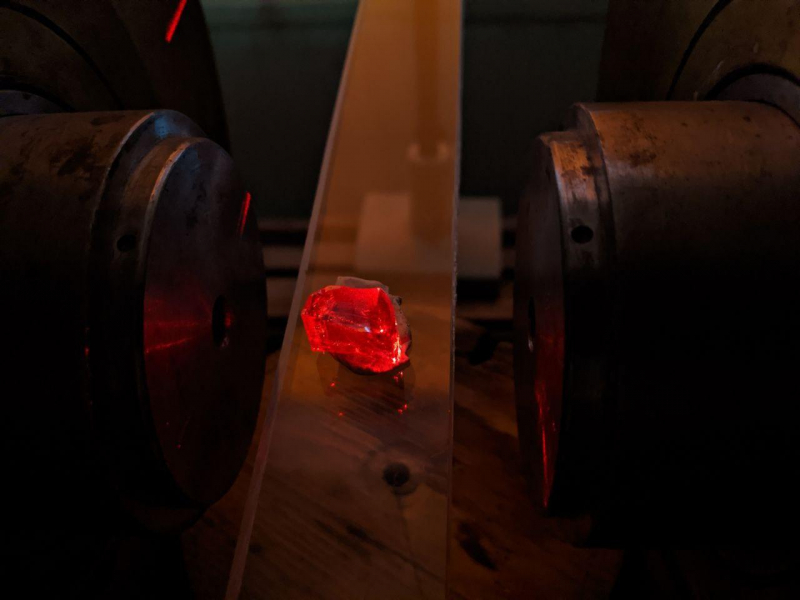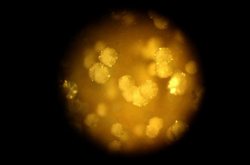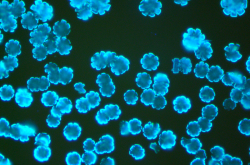The glowing material in the picture isn’t a jewel – it’s a piece of magneto-active glass-ceramics created by the staff of ITMO University’s Research Center for Optical Material Engineering.
This material is unusual because its optical properties (the way it absorbs or emits light) depend on the way a magnetic field affects it. For example, in the picture, the piece is put between magnetic coils, so it glows bright red.
At the same time, the magneto-active ceramic, just like the usual one, is a dielectric. It means that electric charges don’t flow through it. Moreover, ceramic, unlike metal, isn’t attracted to magnets. That’s why this material was used in computer memory systems (optical disсs). Nowadays, Faraday rotators are created on its basis. These rotators are used as reverse absorbers in laser systems, for example, in optical data transmission lines.
Usually, materials of this kind only work in one range: either visible, or infrared one. The staff of the Research Center decided to solve this problem and create a universal material that could be applied in laser shutters functioning both in the visible and infrared spectra.
The picture was taken by the staff members of the School of Photonics’ Research Center for Optical Material Engineering during their experiments.
Reference: A. Starobor, O. Palashov, A. Babkina, E. Kulpina, Y. Sgibnev, Y. Fedorov, N. Nikonorov, A. Ignatiev, K. Zyryanova. Magneto-optical properties of cerium-doped phosphate glass J. Non-Cryst. Solids, 524 (2019), p. 119644, 10.1016/j.jnoncrysol.2019.119644.





